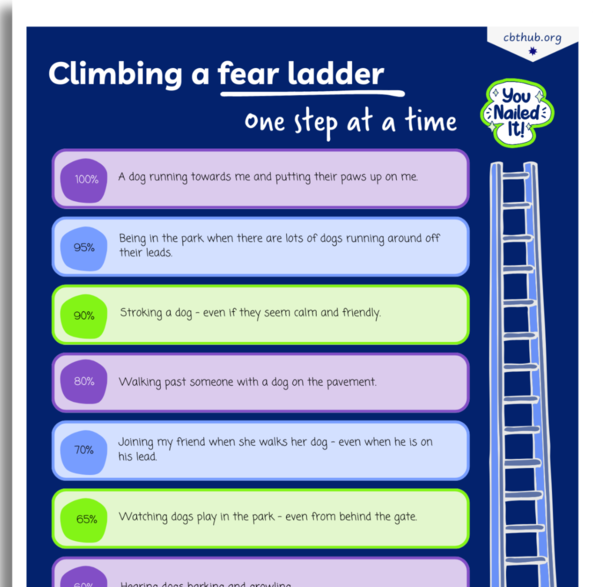Climbing your fear ladder (example)
This resource introduces the concept of a ‘fear ladder’—a graded hierarchy that helps young people gradually confront situations that provoke anxiety, progressing from more manageable scenarios to highly challenging ones.
This tool is designed to support practitioners in ensuring that young people’s exposure tasks are adequately graded and planned. It uses the example of a young person called Tara who has a fear of dogs.
Free

Climbing your fear ladder (example)
Free

Climbing your fear ladder (example)
References and Further Reading
- Craske, M. (2015). Optimizing exposure therapy for anxiety disorders: an inhibitory learning and inhibitory regulation approach. Verhaltenstherapie, 25, 134-143. DOI: 10.1159/000381574.
- Foa, E. B., & Kozak, M. J. (1986). Emotional processing of fear: Exposure to corrective information. Psychological Bulletin, 99, 20–35, https://doi.org/10.1037/0033-2909.99.1.20.
- Tolin, D. F. (2012). Face Your fears: A Proven Plan to Beat Anxiety, Panic, Phobias, and Obsessions. John Wiley and Sons.
- Flatt, N., & King, N. (2008). Building the Case for Brief Psychointerventions in the Treatment of Specific Phobias in Children and Adolescents. Behaviour Change, 25(4), 191–200. doi:10.1375/bech.25.4.191.
- Davis, T. E., III, May, A., & Whiting, S. E. (2011). Evidence-based treatment of anxiety and phobia in children and adolescents: Current status and effects on the emotional response. Clinical Psychology Review, 31(4), 592-602. https://doi.org/10.1016/j.cpr.2011.01.001.


